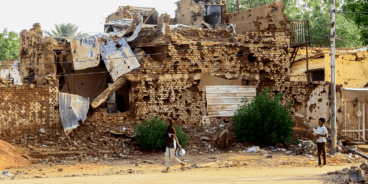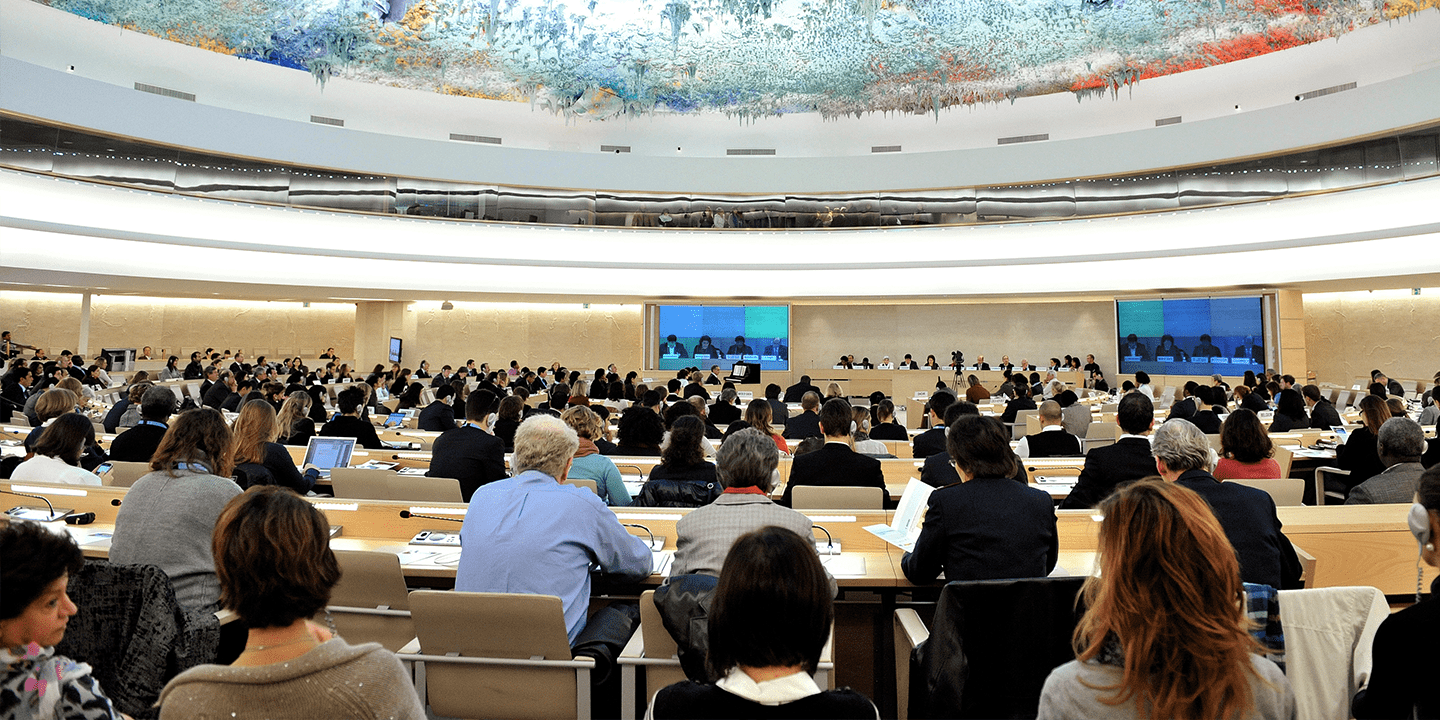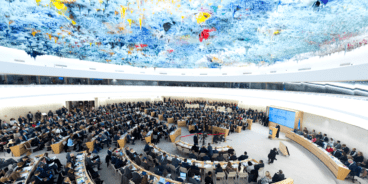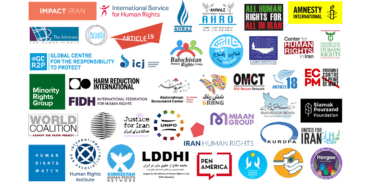

Human Rights Council Investigative Mechanisms and Mass Atrocity Prevention
Since the principle of the Responsibility to Protect (R2P) was unanimously adopted at the 2005 UN World Summit, the international community has looked to the UN Security Council in New York to respond when a government has been unwilling or unable to protect its population from war crimes, crimes against humanity, genocide or ethnic cleansing. Paragraphs 138-139 of the World Summit Outcome Document recognize the Security Council’s unique role with regard to upholding the international community’s responsibility to protect as the body primarily responsible for the maintenance of international peace and security.
However, the Human Rights Council (HRC) and other Geneva-based mechanisms are also essential for preventing atrocity crimes. Since systematic or widespread human rights violations serve as early warning signs of possible atrocities, Geneva-based mechanisms are often the first to raise the alarm regarding situations where violations and abuses threaten to deepen or deteriorate. Such mechanisms play an important role in enabling the international community to assist states in preventing mass atrocities (R2P’s Pillar II) and respond in a timely and decisive manner to atrocity risks (Pillar III).
HRC INVESTIGATIVE MECHANISMS: AIMS AND PURPOSES
Commissions of Inquiry (CoIs), Fact-Finding Missions (FFMs) and other investigative bodies focus on monitoring, investigating and establishing the facts and circumstances of grave abuses and violations of international human rights and humanitarian law, some of which may amount to mass atrocity crimes. Such mechanisms collect evidence, map existing patterns of violations and sometimes identify individual perpetrators, making them instrumental for establishing an accurate and unbiased historical record.
While investigative mechanisms vary depending upon their mandate, they can broadly be described as “a variety of temporary bodies of a non-judicial nature, tasked with investigating allegations of violations of international human rights, international humanitarian law or international criminal law and making recommendations for corrective action based on their factual and legal findings.”2
Since it became operational in 2006, the Human Rights Council has established 31 CoIs, FFMs and other investigative bodies to respond to situations where serious violations and abuses of human rights were being committed. Six such bodies are currently operational, covering the situations in Burundi, Myanmar, Syria, Yemen, Democratic Republic of the Congo (DRC) and South Sudan. During its 42nd session in September 2019 the HRC also voted to establish a new FFM for Venezuela.
Depending upon the context, HRC investigative mechanisms may be mandated to cover entire countries (as is the case of Burundi, Yemen or Syria), or only focus on certain territories within a state (as is the case for the International Team of Experts on the Kasaï region of the DRC). At times they may even be tasked to cover specific events, such as the CoI on the 2018 protests in the Occupied Palestinian Territories.
In recent years, a number of these mechanisms – including those for South Sudan, Burundi and Myanmar – have focused on legal accountability. Although investigative mechanisms are not mandated nor created to initiate criminal prosecutions, they may serve as an important deterrent and inhibit the potential commission of further atrocities.
The public release of reports by investigative mechanisms also puts potential perpetrators on notice that their violations will be subject to ongoing international scrutiny. While “accountability to the truth” has a fundamental impact on dealing with the past, bringing perpetrators of mass atrocity crimes to justice can also potentially help enable reconciliation. In addition, these mechanisms may sometimes play a significant role in identifying root causes of atrocity crimes and outlining necessary structural reforms. The public disclosure of the findings of these mechanisms can therefore contribute to potential political changes – including institutional reform and capacity building – that strengthen domestic efforts aimed at preventing a recurrence of conflict and/or atrocities.
POLITICAL AND OPERATIONAL CHALLENGES
The establishment of various investigative mechanisms serves as an example of successful action by member states to respond to ongoing atrocities, but CoIs and FFMs often face significant challenges. Mobilizing support for the creation of an investigative mechanism requires significant political will from UN member states and mandate renewals are often contested.
Once created, investigative mechanisms also face a number of impediments to the collection of evidence. In most situations investigative mechanisms are created not in the aftermath of atrocities, but in highly insecure, fluid and challenging operating environments where the commission of crimes is ongoing. The current mechanisms for Yemen, South Sudan and Syria highlight these risks. In addition, since consent of the concerned government is not required to establish an investigative mechanism, affected countries sometimes systematically attempt to disrupt or inhibit the work of experts and commissioners by refusing entry, limiting access to sites and witnesses, and sometimes even directly threatening investigators.
It is often assumed that access to a country or territory where atrocities are occurring – or have taken place – is essential for ensuring maximum impact of an investigative mechanism. Constraints on access are often used as an argument to prevent the creation or renewal of an investigative mechanism, or to delegitimize its findings. However, effective fact finding is possible without access. The CoIs on Burundi and Eritrea demonstrate that successful and credible evidence collection can, if necessary, be accomplished through interviews with victims and testimonies collected in countries of asylum. The highly impactful CoI on the Democratic People’s Republic of Korea (DPRK) and the FFM on Myanmar also managed to collect evidence, establish the facts and publish the testimony of victims without access to the territory where the crimes were committed. In short, while direct access is always preferable, it is not essential.
WHAT MAXIMIZES THE IMPACT OF AN INVESTIGATIVE MECHANISM?
Innovative and flexible mandates
In order to address and overcome current political and operational challenges, states have been innovative in designing investigative mechanisms. A certain degree of flexibility in the development of mandates has enabled such mechanisms to adapt to changes on the ground, including the escalation from human rights violations or abuses to the commission of atrocity crimes, which may require an expansion of applicable bodies of law. Utilizing this flexibility, commissioners and experts appointed to such mechanisms have been creative in interpreting their mandates in order to optimize their impact.
For example, the CoI on Syria alerted the international community to crimes committed in the territory of a state outside of its own mandate when it reported on evidence of a possible genocide against the Yazidi population in Iraq by the so-called Islamic State of Iraq and the Levant (Da’esh/ISIL). The reporting by the CoI ultimately contributed to the establishment in September 2017 of the UN Investigative Team to Promote Accountability for Crimes Committed by Da’esh/ISIL.
The Commission on Human Rights (CoHR) in South Sudan provides another example. In addition to customary reporting to the HRC, the CoHR is tasked with the collection and preservation of evidence to support national, regional and international efforts to promote accountability. As a result, the commissioners have interpreted their mandate to include collecting evidence in a manner that allows for the classification of crimes in different ways, including as a violation of treaty obligations, international crimes or domestic crimes. This ensures future prosecutions can take place within multiple types of proceedings, such as trials under universal jurisdiction, national proceedings in third states, or at a hybrid mechanism within South Sudan. While prospects for the expeditious establishment of the Hybrid Court for South Sudan remain dim, the work of the CoHR to collect and preserve evidence and identify perpetrators in South Sudan may be valuable for potential future prosecutions, regardless of when and where they may take place.
Certain mechanisms have utilized this flexibility while determining how to frame their findings. For example, while the CoHR in South Sudan and the CoI on Burundi have refrained from publicly naming perpetrators, the FFM on Myanmar has listed the names and positions of alleged perpetrators in their findings and reports. This has included senior officers with command responsibility for troops that potentially committed atrocities against the Rohingya population in Rakhine State, as well as senior political figures (including State Counsellor Aung San Suu Kyi) who have not upheld their “responsibility to protect the civilian population.” The FFM’s decision regarding Myanmar has increased the international demand for accountability for high-level officials who are potentially responsible for war crimes, crimes against humanity and genocide in Myanmar.
Identifying root causes and utilizing a framework for the prevention of atrocities
While the creation of a historical record and establishment of individual criminal responsibility for atrocity crimes constitute a preferred outcome of a CoI or FFM, some mechanisms have also been successful in the identification of the root causes of human rights violations and abuses. The mandate of the International, Impartial and Independent Mechanism on Syria (IIIM) allows it to not only identify individual perpetrators but to also report on how institutions and structures have facilitated the commission of atrocities.
The CoI on Burundi and the FFM on Myanmar have both utilized the UN’s Framework of Analysis for Atrocity Crimes to identify significant structural risk factors and potential triggers that could result in a recurrence and/or expansion of potential war crimes, crimes against humanity or genocide. By directly applying an atrocity prevention lens, investigative mechanisms can broaden our understanding of patterns of behavior that enable the commission of atrocities. Where relevant, all HRC investigative mechanisms should adopt a similar approach and actively collaborate with the UN Office on Genocide Prevention and the Responsibility to Protect.
Avoiding fragmentation while adapting to new realities
As the creation of investigative mechanisms becomes more common, there is a risk of fragmentation, with too many different actors collecting evidence in an affected area. Close communication amongst bodies engaged in parallel investigative activities – including UN country teams and peacekeeping missions, as well as local, national and international non-governmental actors – may help to avoid duplication, re-traumatization of victims and dilution of testimony.
There is also a need for greater understanding of how CoIs and FFMs can best respond to new variables. For example, in some of today’s atrocity situations violence is fueled by increased friction over natural resources, as well as by population movements and inter-communal conflicts linked to the devastating effects of accelerating climate change. In addition, amidst increasing xenophobia around the world and the use of social media to spread hate speech, investigative mechanisms must be equipped to understand how new digital technologies are affecting risk factors and becoming possible triggers for violence. Closer collaboration between various investigative mechanisms may facilitate the exchange of best practices in addressing these new variables.
WHAT IMPACT CAN INVESTIGATIVE MECHANISMS HAVE?
The establishment of an investigative mechanism is not the end of the justice process. Within the HRC, the recommendations made by mechanisms can contribute to the establishment of follow-up mechanisms, including the creation of a new special procedures mandate or authorization of technical assistance and capacity building. Nevertheless, the recent proliferation of mechanisms raises the question of how to ensure that their impact is felt across the entire UN system, including all relevant agencies, and does not remain limited to Geneva-based institutions.
A limited number of mechanisms have been mandated to present their reports to the UN General Assembly in New York or to coordinate with relevant UN mechanisms, but this has yet to be systematically integrated into the mandates of all FFMs and CoIs. To maximize their potential political impact and bridge the gap between the human rights and conflict prevention agendas, the reporting obligations of investigative mechanisms should be expanded to include other UN bodies, including the UN Security Council. Institutionalized information sharing can contribute to a more timely and decisive response in both New York and Geneva.
A number of HRC-mandated investigative mechanisms have also called for the situation they are examining to be referred to the International Criminal Court. In the case of DPRK, this resulted in annual resolutions adopted in the UN General Assembly since December 2014 urging the Security Council to refer the situation to the Court.
A mandate to preserve evidence is particularly important in contexts where such materials are at risk of being destroyed, or where victims and witnesses are at risk of displacement or intimidation, making it more difficult for subsequent information collection. In the case of Myanmar, as a follow-up to the conclusions and recommendations made by the FFM, the HRC established the Independent Investigative Mechanism for Myanmar, mandated to “collect, consolidate, preserve and analyze evidence of the most serious international crimes and violations of international law.” In its final report, the Myanmar FFM also recommended that states bring the government of Myanmar to the International Court of Justice (ICJ) for violation of its commitments under the Convention on the Prevention and Punishment of the Crime of Genocide. The government of The Gambia has since filed a case against Myanmar at the ICJ.
Ultimately, the identification of individual perpetrators, collection and preservation of evidence, and preparation of files in accordance with international legal standards, can increase pressure for national and international actors to pursue legal accountability. In some cases, investigative mechanisms can also inspire collective action by the international community to respond to the commission of atrocity crimes and impose targeted sanctions, arms embargoes or other economic or political measures that increase pressure on a state, government or non-state actor to end atrocities once and for all.
CONCLUSION
Despite the proliferation of HRC-authorized mechanisms in recent years, the establishment of such bodies should not be confused with increased political will to respond to mass atrocity crimes, unless their investigations result in subsequent international, regional or national efforts to ensure accountability, foster reconciliation and facilitate non-recurrence. It is therefore important that the conclusions reached by investigative mechanisms are disseminated across multilateral, regional and domestic political systems, and that their recommendations are implemented.
While HRC-authorized investigative mechanisms should not represent the only response by the international community when vulnerable populations are at risk of war crimes, ethnic cleansing, crimes against humanity or genocide, they are well suited to support accountability processes that can bring perpetrators to justice. It is only by learning from past investigative mechanisms that we can improve and deepen their enduring effectiveness as a crucial preventive tool.
Related Content


